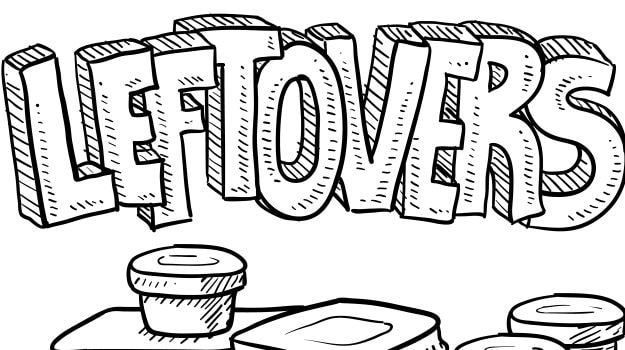Image via iStockAs a lifelong clutter-phobe, I relish a good spring cleaning, but facing my overflowing freezer and the multitude of jars, boxes and cans that have accumulated in my kitchen is downright daunting. How do you know whether a food is salvageable or spoiled, whether to keep it or toss it? Here's a primer, along with some simple ways to keep food waste to a minimum.
Expired canned and packaged goods
The "best by" or "use by" date on canned and packaged foods can be a helpful indicator of shelf life, but passing that date doesn't necessarily mean you should throw the food out right away. The date indicates the manufacturer's estimated window for optimal quality, not whether a food is safe to eat. So an energy bar that is past its stamped date may be a little less crunchy, mustard less pungent or dried fruit less plump, but chances are you wouldn't even notice the difference in an unopened package for months or even a year past the expiration date. (An important exception is infant formula, which should not be used after its "use by" date.)
Consider the expiration date as a guide for quality, therefore, and throw away any canned goods that are bulging or deeply dented, which means they may be contaminated with botulism, a toxin that can be deadly even in minuscule amounts.
But beyond that, evaluate a food's color, texture, taste and aroma yourself - if it seems off, toss it. If it seems fine, it probably is.
To ensure a longer life for the foods you purchase, handle them properly, keeping them in a cool, dry place, tightly sealed and refrigerated, if called for, once opened. Make it easy for yourself to follow the "first in, first out" rule by positioning new purchases behind older ones on your shelves. Also, once a food is opened, keep it fresh and safe by avoiding doing things such as getting crumbs in the mayo or putting your already-licked spoon back in the peanut butter. (Come on, admit it.)
Oils, nuts and whole grains
Oils, nuts and whole grains are especially prone to rancidity, meaning the fats in them break down to produce unpleasant odors and tastes and potentially form unhealthy free radicals - oxidized compounds that can damage the cells in our bodies. (They are what antioxidants protect against.) So make a sniff test of these items part of your spring-cleaning ritual, and toss any that smell off or unpleasant.
To avoid waste down the road, don't buy giant jugs of oil and large bags of nuts or whole grains - they are not a better deal unless you go through them quickly. Don't be tempted to keep oil by the stove; instead, store it, tightly sealed, in a cool, dark place. Same goes for nuts and whole grains, which also can be stored in the refrigerator or freezer to extend their shelf life.
Baking mixes and leaveners
Because a leavener's potency degrades over time, abide by the expiration dates and toss old self-rising flours and baking mixes for optimally fluffy baked goods. If the product still smells good and you are determined to salvage it, you can use it, but you will get a less puffy end result (or you can add a little extra baking powder to the mix).
To test whether a box of baking soda is still good, put one-fourth teaspoon of it in a half-cup of warm water with one-fourth teaspoon of vinegar. If it fizzes, it is still active; if not, toss it out. You can do the same test for baking powder, omitting the vinegar.
Moldy items
Molds thrive in warm, moist conditions, but they can grow at cool temperatures, too. Chances are good that you have encountered their fascinatingly fuzzy and colorful spores on a forgotten container of food in your refrigerator at some point. Certain molds, such as those used to make cheese, are beneficial, but others can cause allergies and respiratory problems and produce toxic compounds that can make you sick.
When a food has a thick surface layer of mold, root threads and a potentially poisonous substance have also spread throughout the food, so even if mold is visible only on the surface, you can't salvage it by scraping the mold off the top. Toss any containers of food or soft cheeses that have mold that is not obviously one used in the production of the food. Since mold cannot penetrate deeply into hard cheeses, such as Parmesan and cheddar, you can save them by simply cutting off the moldy part, removing about an inch of the surface layer. Also, with dry-cured sausages and hams, you can just scrub off any mold that may have formed on the surface.
Frozen food
Frozen foods are technically safe to eat indefinitely. But over time, their textures suffer, and they develop unpleasant tastes, especially if they have not been wrapped properly. Toss any freezer-burned or unlabeled mystery meat and make a point of soon thawing and cooking raw meats that have been in the freezer for over a year or prepared foods that have been in there longer than four months.
Moving forward, for optimal quality, wrap food twice before freezing it - once in foil, plastic wrap or a sealable container and then in a plastic freezer bag. And remember to label it with the date and contents to make it easier on yourself and to reduce waste next spring.
(This story has not been edited by NDTV staff and is auto-generated from a syndicated feed.)




